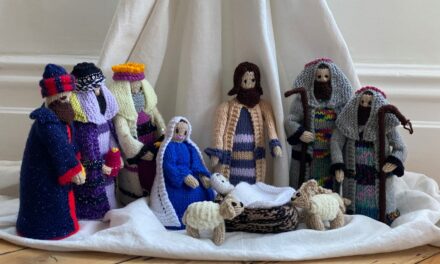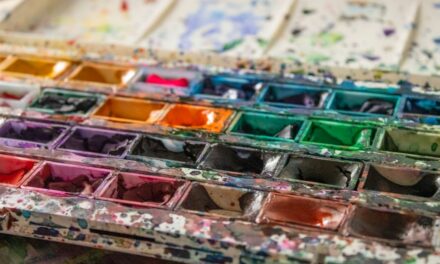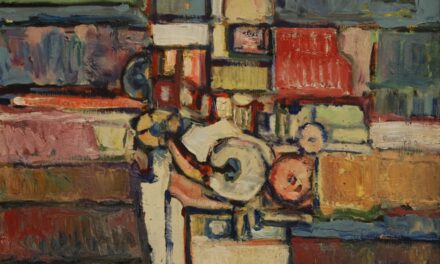Family heritage serves as a profound source of inspiration for artists, providing a rich tapestry of narratives, traditions, and values that can be woven into their work. The significance of family heritage in art lies not only in the personal connection it fosters but also in the broader cultural context it represents. Each artist’s background is unique, shaped by the stories of their ancestors, the customs they inherited, and the experiences that have been passed down through generations.
By exploring these elements, artists can create works that resonate on a deeper level, inviting viewers to engage with their own histories and identities. Art has the power to transcend time and space, allowing individuals to connect with their roots in a tangible way. When artists draw upon their family heritage, they are not merely recounting personal stories; they are also contributing to a collective narrative that reflects the diversity of human experience.
This exploration of heritage can foster a sense of belonging and identity, as artists and audiences alike recognise the shared threads that bind them to their past. In this way, art becomes a vehicle for understanding and appreciating the complexities of family history, encouraging dialogue and reflection on the values that shape our lives.
Summary
- Family heritage in art helps to preserve and celebrate the unique stories and traditions passed down through generations.
- Different artistic mediums such as painting, sculpture, and photography offer diverse ways to express and share your family’s history and experiences.
- Incorporating family traditions and customs into art can create meaningful and personal pieces that reflect your cultural identity.
- Symbols and imagery can be used to represent and honour your family heritage, adding depth and significance to your artistic creations.
- Capturing family memories and moments through art allows for the preservation of cherished experiences and the sharing of these stories with future generations.
Exploring Different Artistic Mediums for Telling Your Family Story
The choice of artistic medium can significantly influence how a family story is conveyed. From painting and sculpture to photography and digital art, each medium offers unique possibilities for expression.
An artist might choose to create a vibrant canvas that reflects the warmth of familial love or the tumultuous nature of past struggles, using brushstrokes to convey feelings that resonate deeply with viewers. On the other hand, photography provides a more literal representation of family heritage, capturing moments in time that can be revisited and cherished. A series of photographs documenting family gatherings, ancestral homes, or significant life events can serve as a visual narrative that speaks volumes about one’s lineage.
Digital art also opens up new avenues for storytelling, allowing artists to blend traditional techniques with modern technology to create immersive experiences that engage audiences in innovative ways. By experimenting with various mediums, artists can find the most effective means to articulate their family stories, ensuring that their heritage is communicated authentically and powerfully.
Incorporating Family Traditions and Customs into Your Art
Family traditions and customs are integral components of heritage that can be beautifully integrated into artistic practice. These rituals often carry deep emotional significance and reflect the values and beliefs that have been instilled in successive generations. For example, an artist might choose to depict a traditional family gathering, such as a holiday celebration or a rite of passage, using their chosen medium to capture the essence of these moments.
The act of creating art around such customs not only preserves them but also allows for personal interpretation and reflection. Moreover, incorporating family traditions into art can serve as a means of education for future generations. By visually representing these customs, artists can create a bridge between the past and the present, ensuring that younger family members understand their heritage and its importance.
This practice can take many forms, from illustrating traditional recipes in a cookbook-style artwork to creating textile pieces that showcase patterns or motifs specific to a family’s cultural background. In doing so, artists not only honour their lineage but also contribute to the ongoing narrative of their family’s story.
Using Symbols and Imagery to Represent Your Family Heritage
Symbols and imagery play a crucial role in conveying the essence of family heritage within art. These visual elements can encapsulate complex ideas and emotions, allowing artists to communicate their stories in a succinct yet impactful manner. For instance, an artist might use specific colours or motifs that are significant to their culture—such as the use of red in Chinese art to symbolise good fortune or the incorporation of Celtic knots to represent interconnectedness in Irish heritage.
By thoughtfully selecting symbols, artists can imbue their work with layers of meaning that resonate with both personal and cultural significance. Imagery can also serve as a powerful tool for evoking memories and emotions associated with family heritage. An artist may choose to depict ancestral landscapes or family heirlooms that hold special meaning within their lineage.
These representations not only celebrate the past but also invite viewers to reflect on their own connections to similar symbols within their families. By creating art that utilises these visual cues, artists foster a sense of recognition and understanding among audiences, encouraging them to explore their own heritage through the lens of shared symbols.
Capturing Family Memories and Moments in Art
The act of capturing family memories through art is a deeply personal endeavour that allows artists to immortalise significant moments in time. Whether it be a cherished childhood memory or a poignant family milestone, these experiences can be transformed into visual narratives that resonate with both the artist and their audience. Artists may choose to create portraits of loved ones or depict scenes from family life that evoke nostalgia and warmth.
Through these representations, they not only honour their memories but also create a legacy that can be passed down through generations. Moreover, capturing these moments in art serves as a form of storytelling that transcends verbal communication. Visual narratives can convey emotions and experiences in ways that words often cannot, allowing viewers to connect with the artist’s journey on a visceral level.
An artwork depicting a family reunion may evoke feelings of joy and togetherness, while a piece reflecting on loss may resonate with themes of grief and remembrance. By translating personal memories into artistic expression, artists create a bridge between their individual experiences and the universal themes of love, loss, and connection that define the human experience.
Preserving and Sharing Your Family Heritage Through Art
Art serves as an invaluable medium for preserving family heritage, allowing artists to document their lineage in ways that can be shared with future generations. By creating works that reflect their family’s history—be it through storytelling, symbolism, or imagery—artists ensure that these narratives are not lost to time. This preservation is particularly important in an increasingly globalised world where cultural identities may become diluted or forgotten.
Through art, individuals can assert their unique heritage while contributing to the broader tapestry of human experience. Sharing this heritage through art can take many forms, from exhibitions showcasing family-themed works to community projects that invite others to explore their own backgrounds. Artists may also choose to publish books or create online platforms where they can share their stories alongside visual representations.
This act of sharing not only fosters connections within families but also encourages dialogue among diverse communities. By inviting others to engage with their heritage through art, artists create opportunities for understanding and appreciation across cultural boundaries.
Connecting with Your Ancestors Through Artistic Expression
Artistic expression offers a unique avenue for connecting with one’s ancestors, allowing individuals to explore their lineage in profound ways. Through creative practice, artists can delve into the lives of those who came before them, seeking inspiration from their stories, struggles, and triumphs. This connection can manifest in various forms—be it through research into ancestral histories or by incorporating elements from traditional practices into contemporary works.
By honouring their ancestors through art, individuals not only pay tribute to their legacy but also gain insight into their own identity. Moreover, this connection can foster a sense of continuity between past and present. As artists engage with their heritage through creative expression, they may find themselves reflecting on how their ancestors’ experiences have shaped their own lives.
This introspective journey can lead to a deeper understanding of personal values and beliefs while reinforcing the importance of cultural continuity. In this way, artistic expression becomes a means of bridging generational gaps, allowing individuals to honour their roots while forging new paths forward.
Embracing Diversity and Inclusivity in Family Heritage Art
In an increasingly interconnected world, embracing diversity and inclusivity within family heritage art is essential for fostering understanding and appreciation among different cultures.
By incorporating diverse perspectives into their art, they contribute to a more inclusive narrative that acknowledges the complexities of identity in contemporary society.
This embrace of diversity can manifest in numerous ways—through collaborative projects that bring together artists from different backgrounds or by exploring themes that highlight shared experiences among various cultures. For instance, an artist might create a series that juxtaposes elements from multiple heritages, illustrating how interconnectedness transcends individual identities. By doing so, they invite audiences to reflect on their own backgrounds while fostering dialogue about cultural exchange and mutual respect.
Ultimately, embracing diversity within family heritage art enriches both the artistic landscape and our collective understanding of what it means to belong in an ever-evolving world.
Family Heritage in Art: Telling Your Own Story is a fascinating exploration of how personal narratives can be conveyed through artistic expression. This article delves into the importance of preserving family history through creative means, highlighting the ways in which art can serve as a powerful tool for storytelling. For further inspiration on how art can be used to ignite the imagination, check out this article on Think of Art.
FAQs
What is family heritage in art?
Family heritage in art refers to the practice of using art to tell the story of one’s family history, traditions, and cultural heritage. This can include creating visual representations of family stories, traditions, and experiences through various art forms such as painting, sculpture, photography, and mixed media.
Why is it important to tell your family’s story through art?
Telling your family’s story through art can help preserve and celebrate your family’s heritage and traditions. It can also provide a creative and visual way to pass down family history to future generations, fostering a sense of identity and connection to one’s roots.
What are some common art forms used to depict family heritage?
Common art forms used to depict family heritage include family portraits, ancestral landscapes, cultural artifacts, and symbolic representations of family traditions. Artists may also use mixed media, collage, and assemblage to create multi-dimensional representations of their family’s story.
How can I start telling my family’s story through art?
To start telling your family’s story through art, you can begin by gathering family photographs, heirlooms, and stories that hold significance to your family’s heritage. From there, you can choose an art form that resonates with you and begin creating visual representations of your family’s history and traditions.
What are some tips for creating art that reflects my family’s heritage?
Some tips for creating art that reflects your family’s heritage include conducting research on your family’s history, traditions, and cultural background, seeking inspiration from family stories and experiences, and incorporating symbolic elements and motifs that hold personal significance to your family. It’s also important to approach the process with an open mind and a willingness to experiment with different artistic techniques and styles.



